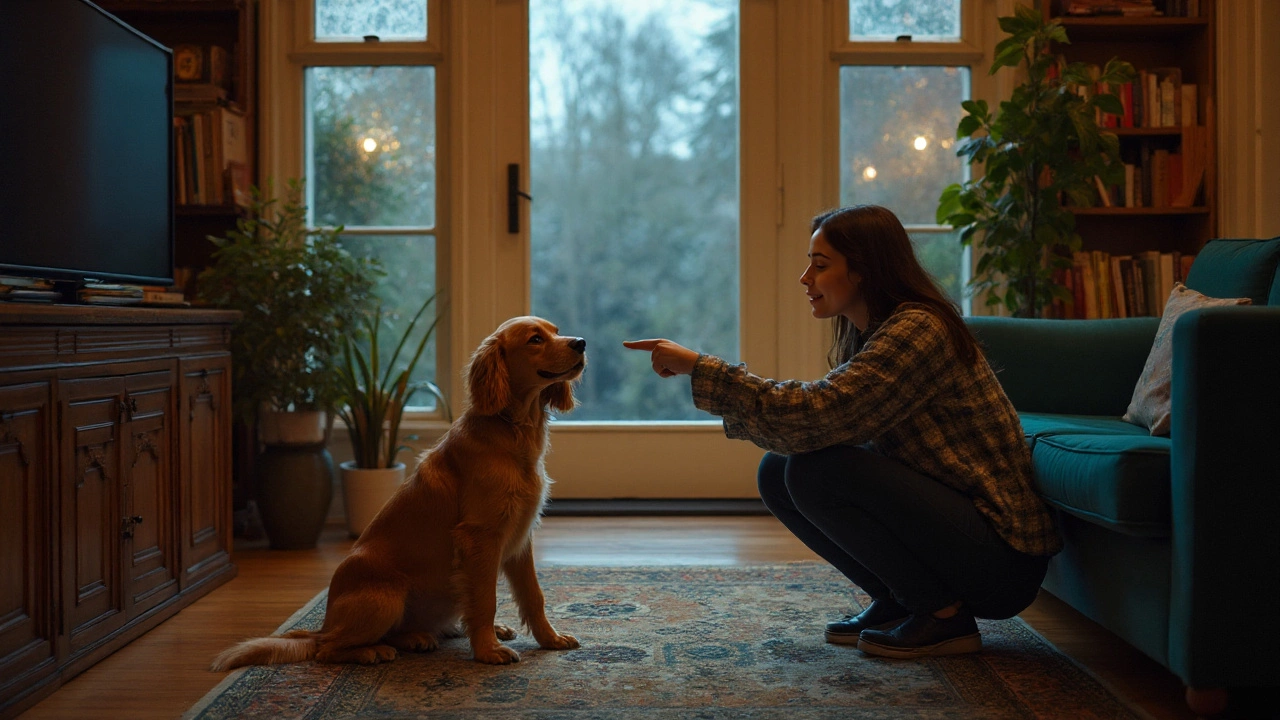Dog Communication: How Dogs Talk and What It Means for You
Ever wonder what your dog is trying to tell you? Dogs don’t use words, but they have a whole toolbox of signals – tail wags, ear flips, posture shifts, and a range of vocalizations. Understanding these cues can stop confusion, improve training, and make life with your dog more enjoyable. Below you’ll find the basics of canine communication, plus quick tips you can try today.
Reading Your Dog’s Body Language
The easiest way to start decoding a dog is by watching its body. A relaxed dog will have a soft, open mouth, loose body, and a tail that moves loosely. If the tail is tucked, ears are back, and the body looks stiff, the pup is likely scared or uneasy. Notice the eyes too – a soft gaze means calm, while a hard stare can signal a challenge.
Posture tells a story. A dog that leans forward with a slightly raised tail is showing interest or excitement. When a dog shifts weight onto its back legs and lifts the front, it’s a classic “play bow” – an invitation to have fun. Conversely, a crouched stance with the tail low and shoulders hunched means the dog is preparing to defend itself.
Common Sounds and What They Mean
Barking isn’t just noise; it’s a multi‑tool communication method. A short, sharp bark often signals a quick alert – maybe someone at the door. A series of high‑pitched barks can mean excitement, like when you pick up a ball. Low, growling barks usually point to discomfort or a warning. Listening to the pitch, rhythm, and volume helps you decide if your dog needs a walk, a calm voice, or a firm “no.”
Whines and whimpers are usually pleas for attention. If your dog whines when you’re getting ready to leave, it’s showing separation anxiety. A soft whine during a grooming session means they want a break. Growls are more serious – a low, rumbling growl means the dog feels threatened, while a play growl is lighter and often paired with a wagging tail.
Other vocal cues include howls, which can be a response to sirens, other dogs, or an expression of loneliness. If your dog howls when you’re on the phone, they might be trying to join the conversation. Understanding the context helps you decide whether to give comfort or ignore the signal.
Now that you know the basics, try a quick test: stand still and watch your dog’s reaction when you move a hand toward a treat. Notice the ears, tail, and eyes. Does the dog’s body loosen up? Is the tail wagging high? Those positive signs tell you the pup is comfortable and ready to learn.
Use the knowledge you’ve gained to adjust your own behavior. If a dog shows signs of fear, give them space and speak calmly. When they display play signals, join in with a toy or a gentle game of fetch. Matching your energy to theirs builds trust faster than any training class.
Remember, every dog is an individual. Some breeds are naturally more vocal, while others communicate mostly through body signals. Keep watching, keep listening, and you’ll soon find a rhythm that works for both of you.
Ready to sharpen your dog‑reading skills? Pick one article from our blog, try the tips, and notice how your dog’s responses change. The more you practice, the clearer the conversation becomes – and the stronger the bond.
- Morgan Ainsworth
- 0 Comments
Why Dogs Tilt Their Heads When You Talk: Science, Meaning, and Health Red Flags
Dog head tilts aren’t random. We break down hearing, vision, attention, training, and health red flags-plus what to do if a tilt doesn’t stop.
View More- Morgan Ainsworth
- 0 Comments
Dog Licks Explained: What Does It Really Mean When Your Dog Licks You?
Ever wondered why your dog seems obsessed with licking you? This article breaks down the reasons behind this quirky behavior, from showing affection to seeking attention. We’ll get into what’s normal, when licking might signal a problem, and how your dog’s bed plays a role in their licking habits. You’ll find practical tips for managing unwanted licks and learn a few odd facts you probably didn’t know. If you share your home with a four-legged licker, this is for you.
View More- Morgan Ainsworth
- 0 Comments
Do Dogs Really Recognize Their Names?
Dogs are known for their loyalty and companionship, but do they really know their names, or is it just a repeated sound they respond to? Understanding how dogs perceive their names can enrich your travels together and can assist in ensuring effective communication during your adventures. This exploration dives into both scientific research and practical observations, offering insights and tips for dog owners planning their next holiday with their furry friends.
View More


